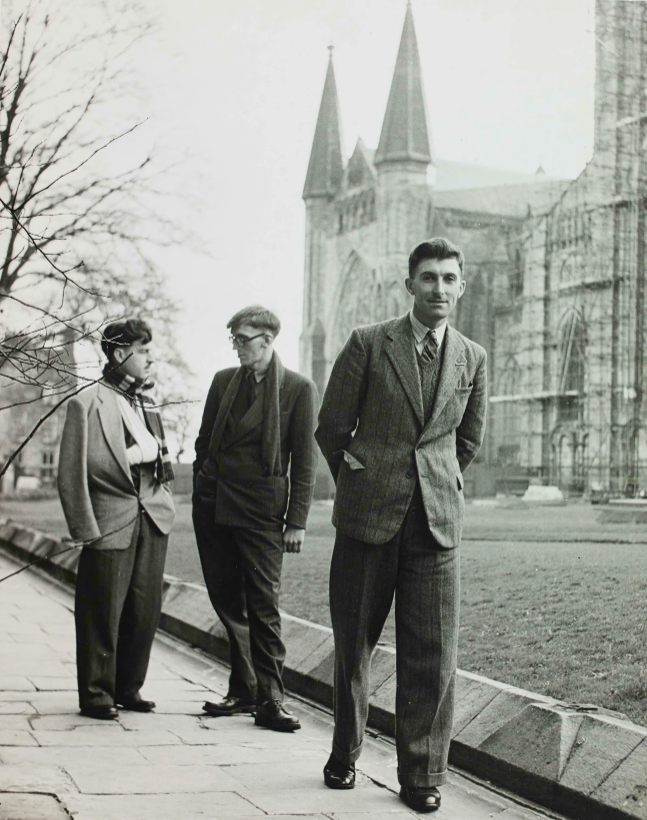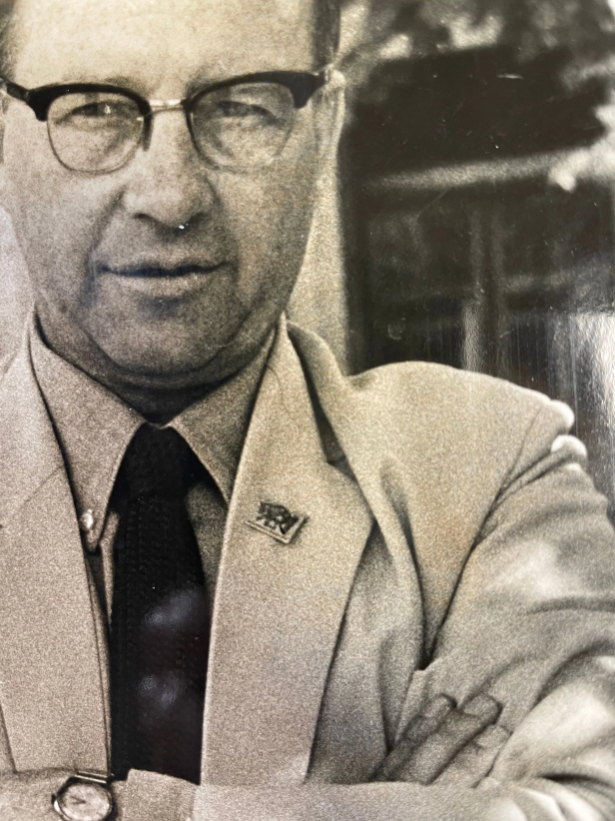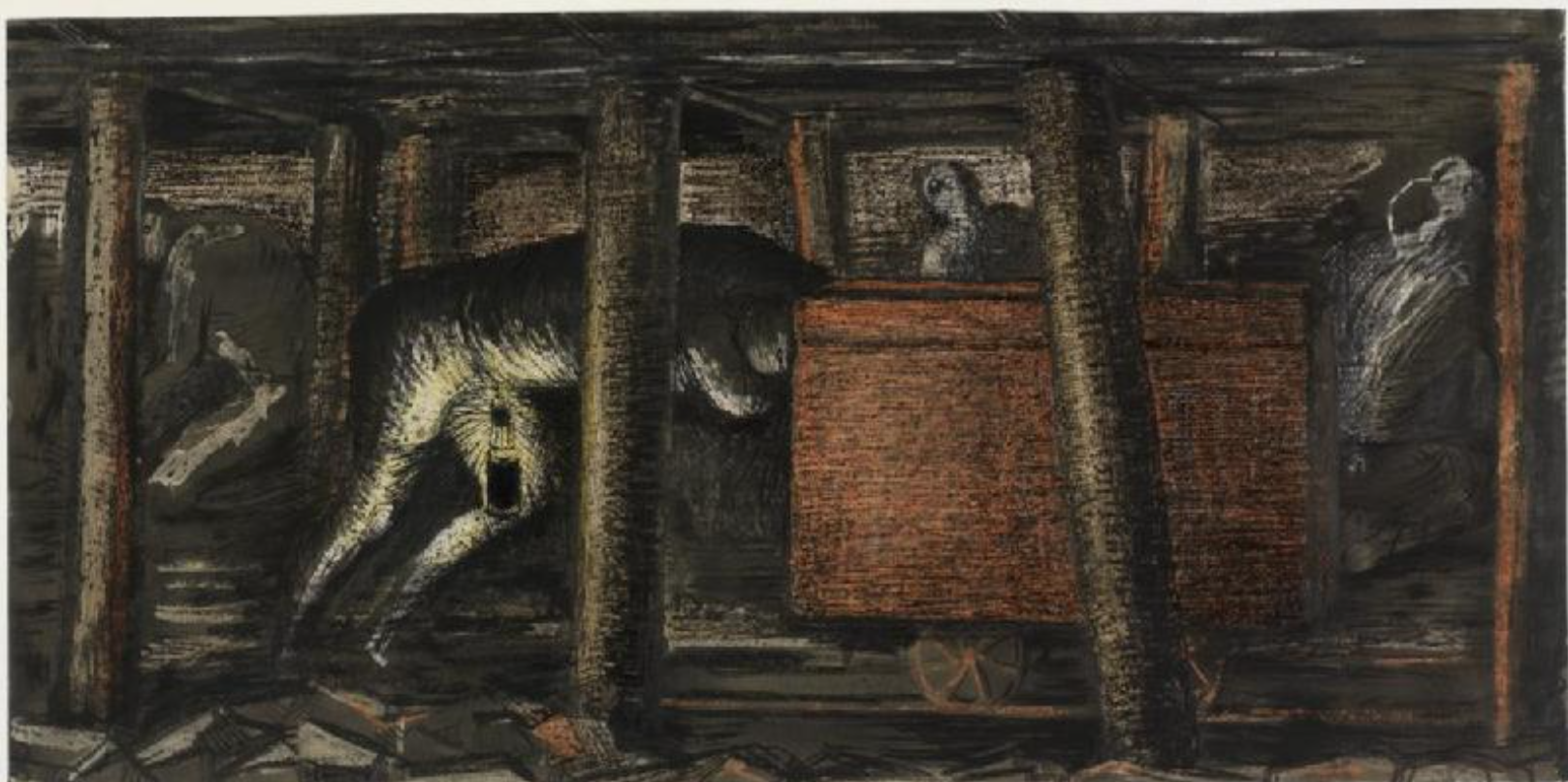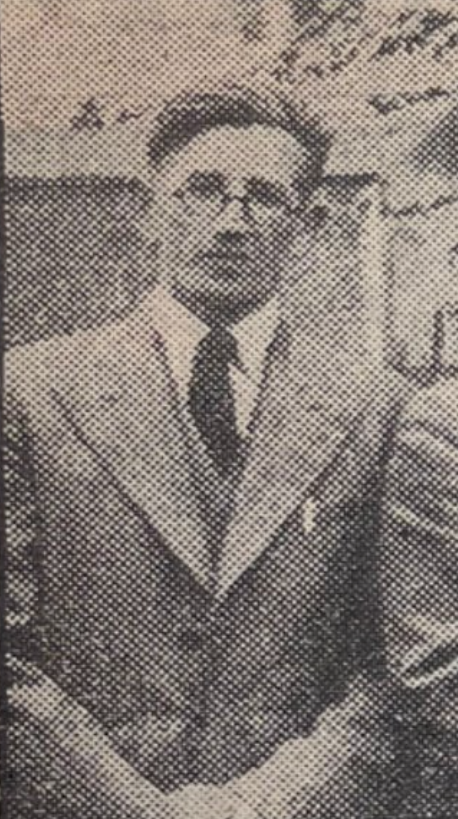Spennymoor Classics: Tales from the Pit University
My Hercules, by Sid Chaplin
Spennymoor is a town in County Durham. It is located in the heart of the Great Northern Coalfield and in the nineteenth century the town provided the workers for several pits sunk in the vicinity. This coal-rich area also attracted the so-called captains of industry to begin producing iron. The whole area depended on these heavy industries for the employment of its people. After a boom period from the 1860s, the town’s fortunes turned and there was a steady decline through the 1880s and 1890s. Living standards were desperately low and unemployment was desperately high in the early twentieth century. The post-war depression made things no better for its inhabitants and by the 1930s the town was severely down at heel.
Now, you might imagine therefore that this would not be an area in which engagement with Greek and Roman culture thrived. And, of course, when compared to areas of greater affluence, with better educational provision and ready access to libraries and cultural activities, you’d be dead right. Opportunity for engagement with theatre, art and literature, let alone “the classics”, was extremely low. But when a concerted effort was made in the 1930s by a group of educators and cultural practitioners – backed by philanthropic organisations associated with the Settlement Movement - and the opportunity consequently increased, take-up was strong and the small coal town became something of an oasis, where its inhabitants could learn, teach, discuss politics and practice the arts.
I want to avoid exaggerating the presence of classics in the rich cultural mix of 1930s County Durham. Yes the Romans were here (in the first century BC), but so too were generations of people surrounding the coal and heavy industries, who had their own interests and cultures, which only sometimes, indeed relatively infrequently, coincided with the Greek and Roman classics. There are several interesting conflicts and contradictions, remaining to this day, in attitudes towards classical culture among the working-class constituencies I have encountered in my research.
These contradictions reflect the complex reality of attitudes towards Classics in Britain.
The Spennymoor Settlement was founded by Bill and Betty Farrell and it lasted between 1931 to 1954. It is in the community surrounding this settlement that I want to focus, but before I do, it is important to acknowledge that this cultural “oasis” was not the only way workers in the region could access their cultural heritage, including the classics. The University of Durham used to have a strong Adult Educational, or “extra-mural” presence in Durham, which meant that university fellows would teach people “beyond the walls” of the University. Actually, sometimes the “extension classes” were held on campus and therefore very much inside the walls of the University. But that is by the by.
Joe Guy
One impressive beneficiary of the Unviersity’s outreach work was a man called Joe Guy, who in the 1940s worked full time down the mine at Sacriston Colliery. He was a ‘datal worker’, that is, a miner on a standard wage without bonuses. He was also active in local government and a member of the Parish Council. For one who occupied such a central position in his community, it is telling that the only reason we now know about Joe Guy at all is that in 1952 he won a place on a course set up by the National Union of Mineworkers and Durham Colleges’ Board of Extra-mural Studies. This achievement was subsequently recorded in COAL magazine, the PR organ of the National Coal Board.
Joe Guy
Joe Guy was, the story ran, ‘a typical Durham miner’ in all ways apart from one ‘small accomplishment’:
‘He has taught himself to read Greek and is a regular contributor to a theological magazine’.
The course held at Durham University was designed to prepare promising workers for management and Trade Union leadership positions. As the COAL feature suggests, the eccentric way Joe Guy spent his leisure time made him somewhat untypical, and – in terms of both physical and mental stamina and intellectual capacity – he was no doubt an exceptional individual. However untypical, his example was no anomaly. This biographical fragment provides evidence (where evidence is scarce) for clusters of workers – constituting a significant minority – who were both willing and able to negotiate the hard-going routes to classical learning and academic attainment in spite of the meagre opportunities afforded them by their social position.
Joe Guy was, in fact, following a long tradition of self-educating men and (occasionally) women in mining communities, who – as the term suggests – sought out learning via routes outside of formal educational provision. Guy’s example also shows the relative success of a state-supported and union-led, post-war approach to what had formerly been uneven and voluntaristic support for workers education, reliant upon religiously funded charities and/or the beneficence of the boss classes and captains of industry.
Sid Chaplin
My favourite pitman poet was a member of the Settlement at Spennymoor. His name is Sid Chaplin. Born in 1916 in Shildon and brought up in Newfield, Chaplin had no formal secondary education, leaving school at 14 to work in the pit. But through attending WEA classes (Workers Education Association) and long hours with books from the library at the Spennymoor Settlement, he educated himself as a young adult and won in 1939 a residential scholarship to Fircroft Workingmen’s College, in Selly Oak, Birmingham.
This was just one of a handful of Adult Education colleges that Spennymoor members (men and women) won scholarships to over the years of Farrell’s wardenship, including Ruskin College, Oxford. Unfortunately for Chaplin, the Second World War disrupted his studies at Fircroft, but not before he had come to the realisation that his would be a literary life. He returned therefore sooner than he might have hoped to Dean and Chapter colliery, but he did so as a writer growing in confidence and determined to establish himself.
Sid Chaplin
The impression we get from his poems, composed between the mid-1930s to the mid-1940s, is that he passionately disliked his work underground, but had a great affection for the cameraderie pit life fostered above. While he worked as a belt fitter he was writing both poetry and short stories, and sending them out to magazines. Some poems make it clear that they were actually written underground. His big break came when he was picked up by John Lehmann’s Penguin New Writing, but he was also published poems in Our Time, winning the respect of the communist poet and editor Arnold Rattenbury.
Chaplin’s first major collection of stories was published in 1941 as The Leaping Lad. He continued this dual life of writing and mining until in 1948 he took the job of reporter and later PR officer for the National Coal Board’s magazine COAL, which allowed him never to return to pit work, even if it did frequently take him back underground as he reported on working conditions and new technology and facilities employed in pits across Britain. In spite of his full-time day job, he continued to be a prolific writer and cultural activist.
Chaplin occasionally wrote poems that used classical imagery to express the unseen plight and daily grind of the English collier. Among his rich papers in Newcastle University Special Collections can be found a large stash of poems, in manuscript and typescript form, and at various stages of composition. These tell the story of a twentyish-year-old coalman first dreaming of and then sucessfully living a literary life. But the overwhelming theme of the collection is minework and its attendant fear, danger, monotony and suffering. For example, the 24 year old poet wrote:
When they carried my comrade
out of the pit.
Cold, silent, and crushed,
We knew that the price was paid.
Silent the wheels, and hushed
The conveyors. No bugle sound
For him was heard,
But only the signal bell
Pealed out in mournful tone,
When they carried the body to bank.
The sunshine greeted him,
The wind caressed him,
A widow wept for him,
When they carried the body to bank.
(*Bank in this context means the surface, or daylight.)
Most of the poems are not overtly political, but as a collection they constitute a powerful cry from the depths and an implicit indictment of the surface reality of middle-class Britain. On one scrap of paper stapled to a few poems is written:
“If the Peoples sing and speak my poems, my purpose is achieved. The reward I ask is not a beautiful binding for my works and art paper, but for their safe-keeping in the hearts of men and women. From the Peoples they came, to the Peoples they return. To MY People are these poems dedicate.”
While these poems were, as he says, written both proudly by and explicitly for a working-class readership, they found a considerably wider one through New Writing and Our Time. The poems communicated the secrets of the underworld to middle-class reading publics. As Lehmnann notes in 1943 they ‘are particularly valuable because he can describe working-class life from inside knowledge’.
Chaplin’s dedication has a self-consciousness to it, redolent of earlier labouring-class poetry in which the working identity is stressed for the benefit of middle-class readerships and subsequent sales. Here, though, unlike in the earlier labouring poets, there is no performance of apology for ostensible deficiencies (for example in education or style). The collection holds poems with titles such as ‘Poems of an Unprivileged Poet’, ‘Comrade Moon’ and ‘The Aristocrat’. The first seems to engage with the tradition of labouring poets. It is explicitly not ‘Poems of an uneducated poet’, which might recall the work of 18th-century poets such as Stephen Duck (‘the thresher poet’), James Woodhouse (‘the shoemaker poet’) and Ann Yearsley (also known as ‘Lactilla, the milkwoman of Clifton’). These are the ‘poems of an unprivileged poet’, an important difference.
The poem ‘Miner’, sees the young pitman relate his own experience below ground to that of the suffering titan god Atlas:
I am the inner Atlas of this spinning globe. At the dark centre of your green circumference I crouch, the crawling wonder of my darker world, The sweating surgeon of the strata depths, The probing, blasting hero of my diamond doom.
At the Coal Face. A Miner Pushing a Tub. Henry Moore (1942)
‘Miners at Work’, was written in response to drawings by Henry Moore:
Dim shapes swathed in darkness,
In darkness swathed in mystery.
Elements:
Darkness, coal, the living flesh
Crawling, creeping, crouching:
The straining of unseen muscles
Against unknown weight.
Unreal me in their inner Hades,
But look, ah!
See the pinpoint glowing of eyes.
The eyes of the dead who live
And in their life attain the mastery
Of blood and sweat.
Tears are for widows.
This straining flesh, this cornerstone
Of creature comfort;
Culture,
Cities of men,
Commonwealth to be.
This is the way to mastery,
Hewn through the planets bones
To the ultimate shining lode.
The message of eyes in the dark?
(Cats eyes that curve to the end of light)
Cauldron within
Says the smouldering spark.
This is a powerful, menacing and revolutionary poem. Here Chaplin explicitly views the ‘straining flesh’ of dehumanised forms toiling in the unseen darkness as ‘the cornerstone of creature comfort; / Culture, / Cities of men, Commonwealth to be.’ The poem is written from the perspective of one of those ‘unreal men in their inner Hades’ and is justifiably critical of the stark inequalities of 1930s Britain, inequalities that have the ‘real’ people on the surface enjoying the fruits of his and his fellow workers’ exhausting labour.
Chaplin’s use of the classical colouring of ‘Atlas’ and ‘Hades’ cast his day’s labour in the cultural and emotional context he felt necessary to describe adequately the grimness of the working conditions of his subterranean fellow workers. It is the cruel punishment and eternal labour of Atlas, and the dark, inescapable underworld home of the Grecian dead that best suit the young artist’s purpose. The epithet ‘inner’ that qualifies both Atlas and Hades emphasises the unjustly disproportionate personal burden laid on the individual miner. The colliers’ world Chaplin paints in these two short poems is dark, claustrophobic, uncomfortable and desperately lonely. There is no other human presence with whom the ‘unknown weight’ can be shared, no camaraderie, and no sign of religion or even external mythology in which to take comfort.
‘My Hercules’ survives, as far as I can tell, only in handwritten early draft form. It goes like this:
My Hercules
My Love
Squat, oily
Hercules.
With the one fang
And the steel steam muscle.
From the fire
We bring your sire[?]
and son
Glowing with lusty life
Is it fear reflects from
Every man’s eye?
Raw steel must die
This is
Transformation, birth
Creation.
The poem may not have been edited and prepared for publication, but I select it from his poems kept by the Newcastle University Special Collections because it seems to address the hero Hercules. The imagery is not clear – or at least I cannot make it out very well – but Chaplin’s Hercules would at first glance seem to be a mechanical cutter of some sort, with its ‘one fang’. However, as a belt fitter it might make more sense for him to have developed this kind of ‘loving’ relationship with a mechanical conveyor, rather than cutter. He does, for example, write a poem addressing his underground conveyor, in which he ponders an ‘eternity of running rubber ribbon’.
The poem does not contain any classical elements, although it is a little reminiscent of the song of the Parcae at the end of Catullus 64:
‘Run, conveyor, run and run my life with you’
After some consultation with the National Coal Mining Museum for England, however, I have learned that there was a conveyor called a “Hercules chain scraper conveyor” made by the company British Jeffrey Diamond. The ‘one fang’ can be explained by the appearance of the single scraping mechanism, which might give the impression of the conveyor endlessly gnawing at whatever piled material is was conveying. It is no mistake that such a machine should be named Hercules, as it heroically, even mythically, lifts and moves heavy weights continuously. The heroisation and classicisation of the naming in turn anthropomorphosises the machinical instrument, encouraging the kind of relationship Chaplin establishes with it and records in the poem. And in his case, it enriches and enlarges the imaginative, mythological realm, within his dark and mundane shiftwork.
We find, therefore, different kinds of reception among Chaplin’s poems, classical receptions with differing levels of engagement with Grecoroman antiquity, and some unique and perhaps unlikely mediations, with which the poet humorously plays. But he also uses, as I hope I’ve shown, the titanic suffering of Atlas and the dark desolation of Hades to emphasise and communicate in a painfully serious way the dangers and fears of minework.
Sid Chaplin is perhaps best known now for his prose writing and television career, but his literary works in general require and deserve further scholarly attention and a wider readership. He was awarded an OBE in 1977 for his contribution to the arts in the North East. His transformation from miner to author was highly untypical. His journey can only really be compared to those of B.L. Coombes and Jack Lawson in Wales. It is impossible to say what would have happened had not Chaplin discovered the opportunities to read and study which the Settlement at Spennymoor afforded him. Chaplin himself reflected in the 1950s just how lucky he felt to have stumbled upon the settlement in 1933:
“I saw people coming out of a building with books under their arms. I hadn’t much idea of what the Settlement was, but I was book-hungry, tired of westerns and adventures, so I propped my bicycle against the wall and went in. […]
The Settlement became my university, opening out new horizons and providing me with a good stout staff to take me towards them.
I studied economics and political theory. My guide was a young man with keen eyes and a topping he was always throwing back – I believe that I too possessed one in those days; an incredible fact which tenderfoot members may now regard with some suspicion. His name was JACK MADDISON. He it was who came to the conclusion that I ought to go to a workingmen’s college, and bullied me to such effect, that for very shame’s sake I had to apply for a scholarship. The miraculous happened; I went to Fircroft for a year. […] I went back to Durham and the pit knowing that my future was in writing. […]
Jack Maddison
In twenty one years the Settlement has produced a handful of students and scholars, a handful of painters, a handful of actors, some social workers and some writers. […] ”
To transform the lives of several handfuls of people is no small achievement, and to do so whilst also providing a positive environment of cultural nourishment to a whole community is, I would say, a huge achievement.
But what exactly was the Settlement at Spennymoor? And how did it come about?
Well, by the 1920s levels of poverty and unemployment in the coal mining region surrounding Spennymoor were fairly extreme. The Dean and Chapter Colliery, in which both Chaplin and the celebrated artist Norman Cornish worked, had been sunk in 1904 and continued to sustain the locality until the 1960s. The severity of the depression in the 1930s attracted the attention of the Christian Socialist University Settlement movement, which had begun in Whitechapel, East London, in 1884, with the establishment of Toynbee Hall. The basic idea behind Settlement was paternalistic and some might say patronising. It believed that if middle-class, educated – ‘cultural reformers’, were to settle in a depressed working-class region they might help restore ‘organic unity’ to the area and improve the lives of its inhabitants.
The North East had attracted six settlements by 1934 in Gateshead, Seaham Harbour, Durham, Spennymoor, Lemington and Middlesborough.
In 1931 Bill Farrell conducted an assessment of Spennymoor for the British Association of Residential Settlements and the Pilgrim Trust. He determined that there was great potential for a residential Settlement. Fresh from the University Settlement Movement headquarters at Toynbee Hall, Farrell arrived in Spennymoor and judged that the unemployed miners (which made up around 35% of the population), needed encouragement (in his words) ‘to think of other things and other spheres of possible work besides the defunct or moribund mine’.
Farrell was from Liverpool originally and had worked there and in London as an actor and theatre practitioner. During the depression he spent time at Toynbee Hall where he became involved in the Settlement movement.
Farrell’s Settlement set out ‘to encourage tolerant neighbourliness and voluntary service, and give members opportunities for increasing their knowledge, widening their interests, and cultivating their creative powers in a friendly atmosphere’. As the reporter-activist Arnold Hadwin put it: ‘The Settlement gave an impoverished community the will and means to fight back against the failings of the State, with assurance and dignity.’
There is a risk that research into classical presences in communities overstates the importance of the classical in contemporary cultural experience. It is hard to adequately contextualise encounters with the classical, such as those discussed above, within their broader cultural nexus, but a look at the Settlement’s syllabus helps.
There are several items that would be familiar to anyone who had visited a settlement, for example the ‘Poor man’s lawyer Service’ and the scout group, both of which had their roots in Toynbee. Most of the groups were entirely Classics-free. Particularly popular, as you might imagine, was the children’s play centre, which essentially offered free childcare for a couple of hours. The cobblers shop was also an important service which taught members how to mend their own shoes. The poultry centre presumably kept chickens and there’s no need to elaborate on the table tennis club. Another successful club was the Sketching club, which fostered the talents of several excellent artists, including most notably Norman Cornish, but not him alone. At the top you can see the BBC Group, which is a version of the radio listening club, which in 1936 just so happened to provide a platform for discussions about Plato. But, as you can see, there was a good deal else besides.
More stories like these about Joe Guy and Sid Chaplin can be found in the book A People’s History of Classics (2020), co-written by Edith Hall and me. The book is now fully and freely available online.






